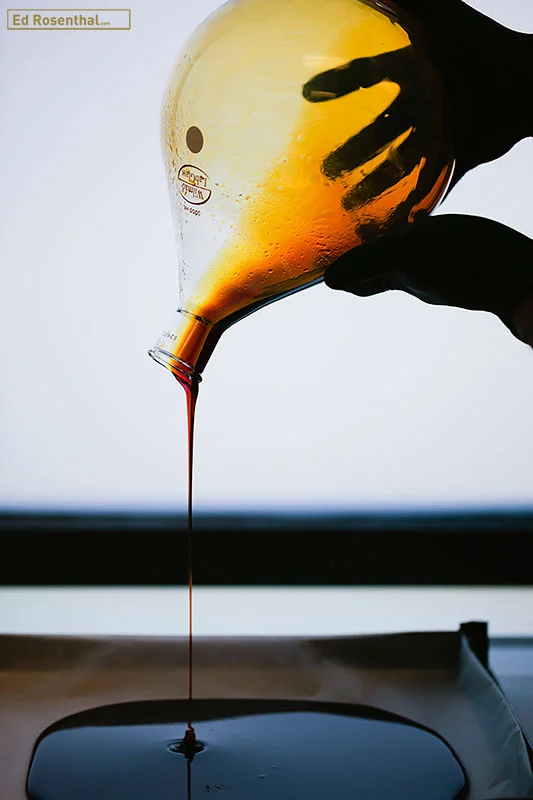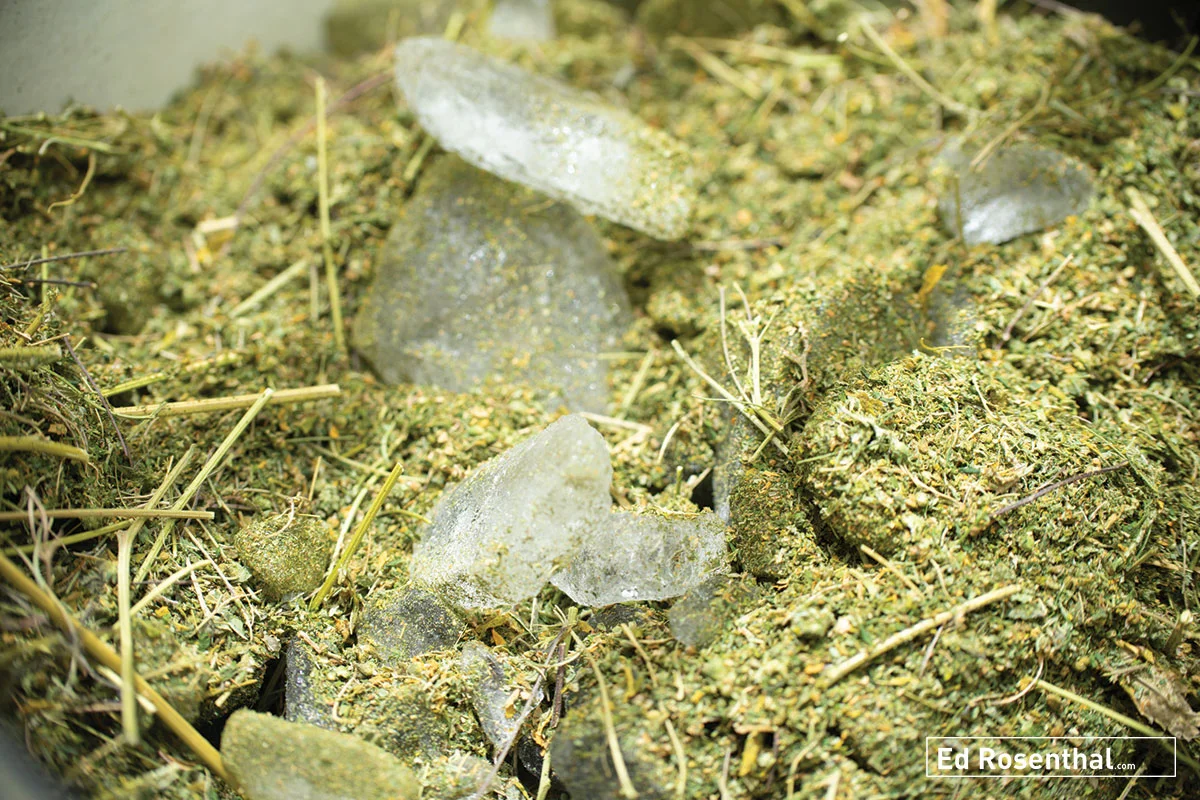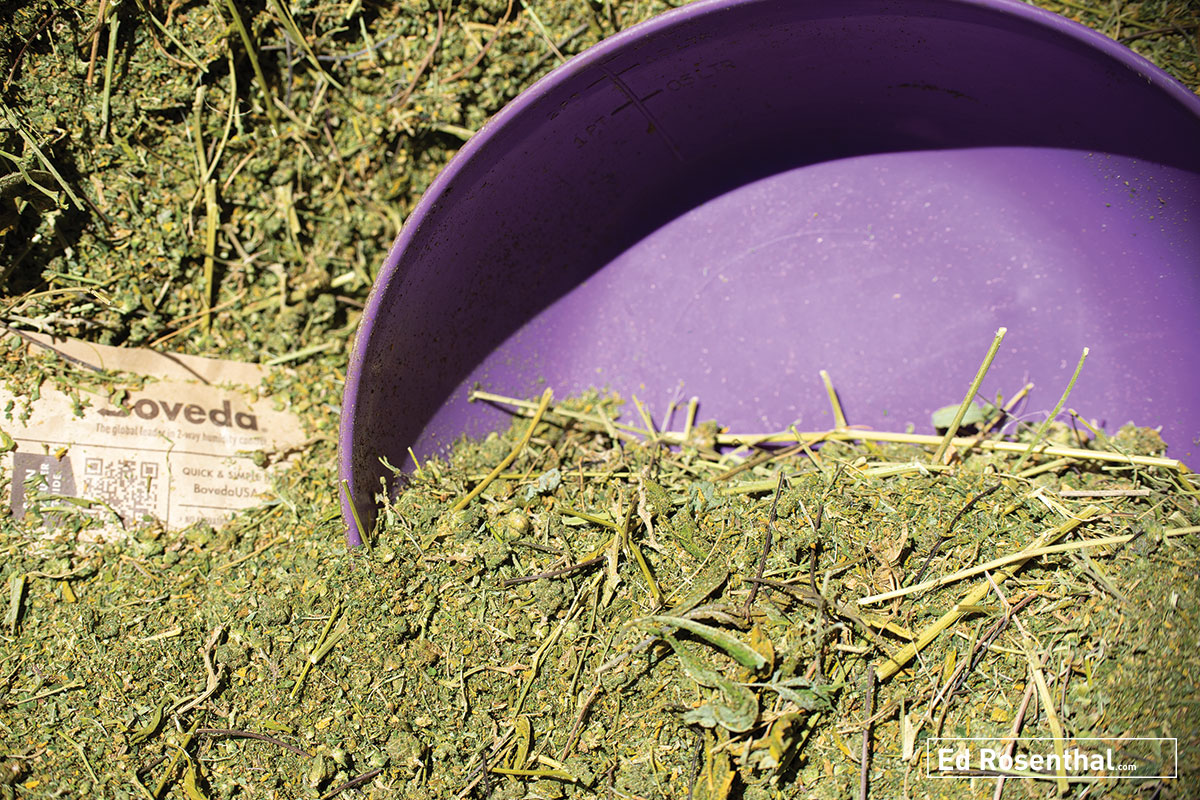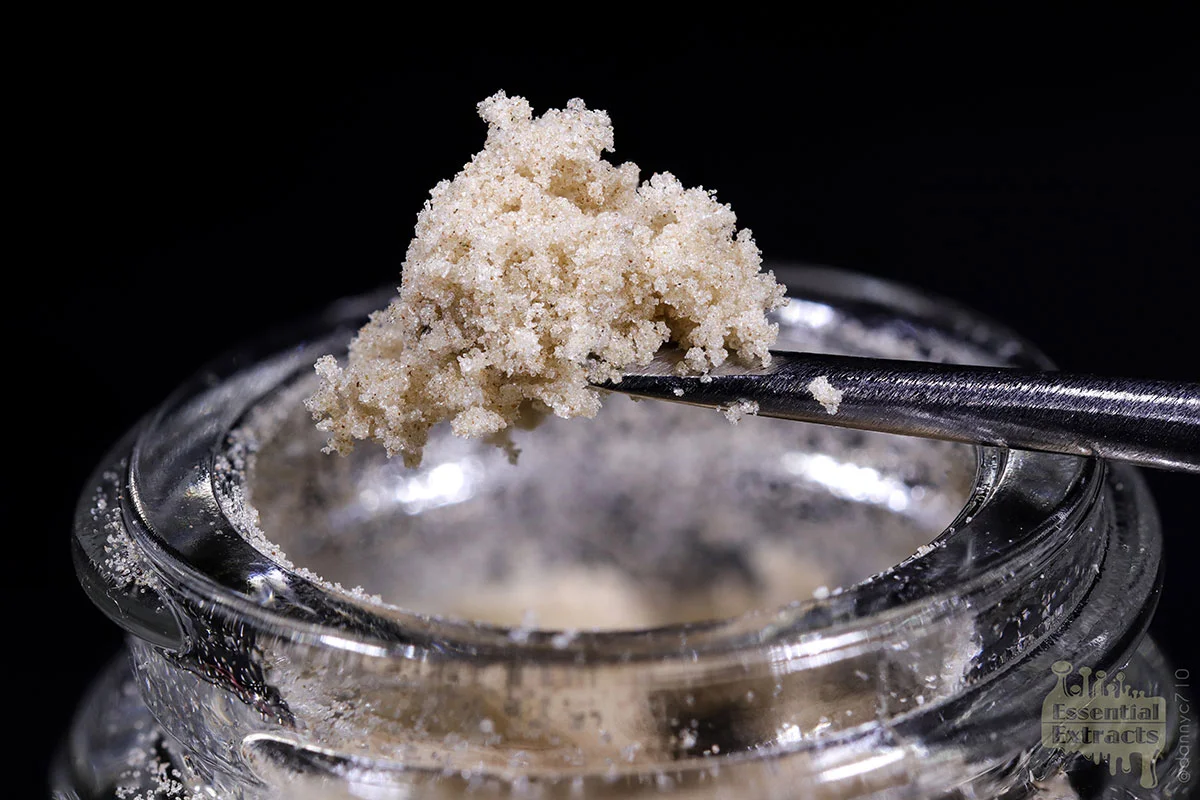WATER HASH 101: Plus 6 methods for DIY Water Hash
Water hash magnified. Photo: Marcus Bubbleman
Water Hash 101
Water hash is a favorite method of making concentrates employed all over the world. Its name comes from the water process used to collect glands from the trim, leaf, and buds. On a fundamental level, the process works because cannabinoids are not water soluble, meaning that the desired resins are not damaged by contact with water and ice.
Water hash can be smoked as loose, granular resin or pressed into traditional hashish: High-quality loose hash can easily be pressed into hashish using nothing more than the palm of one hand and some light, brisk friction, applied using the thumb of the other hand. Loose or pressed, many people are still enthralled by the unique, full-spectrum experience of this potent natural product.

First pass – hand pressed water hash: With multiple passes hand pressed water hash turns from green to tan in color. Photo by Lizzy Fritz.
Water hash can be made in small or large quantities, and turnkey extracting systems can be purchased to simplify the process. It is also possible to make water hash using home-gathered equipment, but with inexpensive kits available, the savings are often negligible. Pre-made systems offer increased precision and efficiency for the water hash process, and their availability contributed to a surge in water hash’s popularity during the late 1990s and early 2000s.
Water hash’s two decade run of dominance ended with the rise of solvent-extracted hash; shatter, wax, and other butane hash-oils have muscled aside bubble hash on many dispensary shelves in the United States over the last few years. But this competition from solvent hash has also inspired water hash makers to step their game up, inspiring an increased emphasis on appearance and flavor. Ultra-fine water hash is now being sold as “solventless wax,” reflecting the broad demand for solvent-free products that mirror the desirable consistency and refined flavor profile of solvent-extracted hash.

CO2. Photo by Kristin Angelo at Olala Eden Labs
High-grade water hash is also great for edibles, and any experienced dabber will tell you that “five star” hash is very dabbable.
It’s also next to impossible to seriously injure yourself or anyone else making water hash, because the process doesn’t involve any flammable chemicals or potentially explosive machinery.
How Water Hash Works

Cannabis leaf, trim, stems and ice. Photos: Lizzy Fritz.
All water hash methods use water, ice, and agitation to separate resin glands from plant material. Water and plant material are placed in a bucket that has been lined with filtration bags, similar in composition to the screens used for making dry sift kief. Like those screens, the bags filter the glands by micron size, separating the hash from the trash. A micron is one-millionth of a meter, or .001 millimeters. The material is stirred to knock the trichomes free, and while the plant material floats in the top bag, the glands (which are heavier) sink and are collected in the lower bags.
Ready-made systems use multiple bags that sort the glands by size: Unlike kief making, the material is separated in one step rather than through repeated sieving. Usually the material is processed once, but some commercial hash makers process it a second time to further isolate the THC.

Industrial water hash machine use mesh bags filled with cannabis inside the machine. Machine is filled with ice and then water, and the bags are ready for agitation. Photos: The Dank Duchess
As with all extraction methods, cold temperature is a key element of water hash production. The ice keeps the water and material very cold so the glands remain brittle and snap off with agitation. After the material is agitated in ice water, it’s allowed to settle. Then the bags are separated, and the glands are removed from each one. After the water hash is dried, it’s ready to smoke.
Water hash varies in color and can be many shades of white, brown, red, even purple. When extracted from the finest-grade material, the potency of water hash can test as high as many solvent hash products, with up to 80% cannabinoid content.
Water Hash Basics
Leaf, trim, and stems, the starting material for hash. Photos: Lizzy Fritz.
All gland-bearing plant material (leaf, trim, buds, shake, or any combination of the four) can be used to make water hash. Dried or frozen material can also be used.
When making water hash it is important to keep the material and the environment very cold. Heat is the enemy. Low-temperature water, near freezing, makes trichomes brittle enough to snap off. A cool room keeps terpenes from vaping off.
Humidity is also a factor. Avoid humid storage conditions to prevent deterioration from bacteria or molds. One method is to store wet or dried cannabis in the freezer. When using material that has not been stored in this way, place it in the freezer until it gets cold.
It’s crucial to treat the cannabis delicately to preserve all of the glands and keep them on the vegetation. Take the utmost care when bucking buds from twigs and stems. Don’t mangle the material from excessive trimming or grinding. Coarsely chopped cannabis is most convenient. Remove twigs, stems, and twist ties, because they can tear the hash-making bags.
Whether using a ready-made bag system or materials from your kitchen, the basic principles of making water hash are the same. There are slight contributions by technique, patience, and proficiency, but what primarily determines the quality of the hash you produce is the caliber of the plant material and the quality and size of the filter.
Here Are 6 DIY Methods Of Water Hash Production
Sour HS 70u hash. Photo by Nikka T of Essential Extracts.
Ready-Made Bags
For water hash, the ready-made bag systems are an excellent choice. They can be used many times.
Home-Made Bags
It is possible to make your own bags or to make a smaller amount of water hash without using bags at all. To make bags, acquire silk screen in the appropriate mesh size. Standard silk-screen material is available in several size increments between the desired 100 to 150 strands per inch.
The Jar Shaker Method
This method is the easiest in terms of time and equipment, but it also produces the least amount of hash, and the product won’t be as pure as with methods using micron-gauged filtering bags.
The Coffee Filter Method
The coffee filter method works well for small-scale water hash production and uses common kitchen equipment.
The Bucket Method
This method utilizes clean and sterilize the buckets. The essentials of water hash methods are the same, whether using a ready-made system or working from your own homemade bags.
The Blender Method
This method uses a household blender, plant material and ice.
A Note on Yields
Processing 227 grams of high-quality material usually yields between 18 grams (5% yield) to 35 grams (15% yield). Yields increase with the quality of the starting material. However, in some instances, such as with Tangie, obtaining a yield over 7% using water is nearly impossible. This is one reason solvent-based methods and other, newer extraction techniques have overtaken water processing in popularity.
But there are considerations other than yield; the full-spectrum effects and natural flavor profile of water hash are unique because the process preserves the terpenes in the glands. For this reason, some people prefer high-quality water hash to solvent-extracted products.

